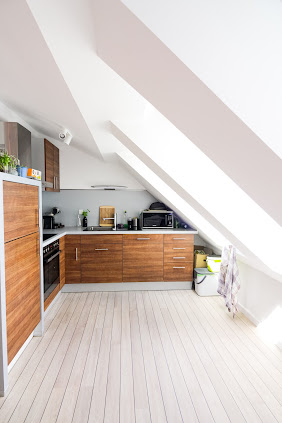From Attic to Beautiful Floor: Tips for Installing Flooring
Turning your attic into a functional and aesthetically pleasing space often involves installing the right flooring. In this guide, we'll discuss the importance and considerations for attic flooring, explore types of flooring suitable for attic spaces, provide installation tips and techniques, discuss integrating stairs and ladders with the flooring, and showcase case studies of attic spaces with beautiful flooring.
Importance and Considerations for Attic Flooring
Attic flooring plays a crucial role in transforming the space into a usable area. Consider the following factors when choosing and installing attic flooring:
Structural Integrity: Ensure that your attic floor can support the weight of the chosen flooring material, furniture, and occupants.
Insulation and Moisture Protection: Proper insulation and moisture barriers are essential to protect the flooring and maintain a comfortable indoor environment.
Accessibility: Consider how the flooring will integrate with access points such as stairs or ladders, ensuring safety and ease of use.
Aesthetics and Style: Choose flooring that complements the overall design and aesthetics of your attic space, whether it's a cozy retreat, home office, or storage area.
Types of Flooring Suitable for Attic Spaces
Several flooring options are suitable for attic spaces, including:
Laminate Flooring: Durable and cost-effective, laminate flooring mimics the look of hardwood or stone and is easy to install.
Engineered Wood Flooring: Engineered wood offers the beauty of hardwood with enhanced durability and stability, making it suitable for attic environments.
Carpet or Carpet Tiles: Soft and comfortable underfoot, carpet or carpet tiles provide insulation and noise reduction in attic living areas or bedrooms.
Vinyl Flooring: Vinyl is waterproof, low-maintenance, and available in a wide range of styles, making it ideal for high-moisture attic areas like bathrooms.
Cork Flooring: Eco-friendly and resilient, cork flooring provides thermal insulation and a soft feel, suitable for living spaces or playrooms.
Installation Tips and Techniques for Attic Flooring
When installing attic flooring, follow these tips for a successful and long-lasting result:
Prepare the Subfloor: Ensure the attic subfloor is clean, level, and free of moisture or structural issues before installing the flooring.
Choose Floating or Glue-Down Installation: Floating floors are easier to install and can be placed directly over the subfloor, while glue-down options offer added stability.
Allow for Expansion: Leave a small gap around the edges of the flooring to accommodate expansion and contraction due to temperature and humidity changes.
Use Vapor Barriers: Install vapor barriers or underlayment to protect the flooring from moisture and improve insulation.
Follow Manufacturer Guidelines: Adhere to the manufacturer's installation instructions and recommendations for the specific type of flooring you choose.
Choosing and installing the right flooring for your attic can enhance its functionality, comfort, and aesthetics. Whether you opt for laminate, engineered wood, carpet, vinyl, or cork flooring, careful consideration of installation techniques, integration with access points, and style preferences will ensure a beautiful and practical attic space. For more tips and information on attic flooring, visit our website at https://atticplus.com.au/.




Mga Komento
Mag-post ng isang Komento